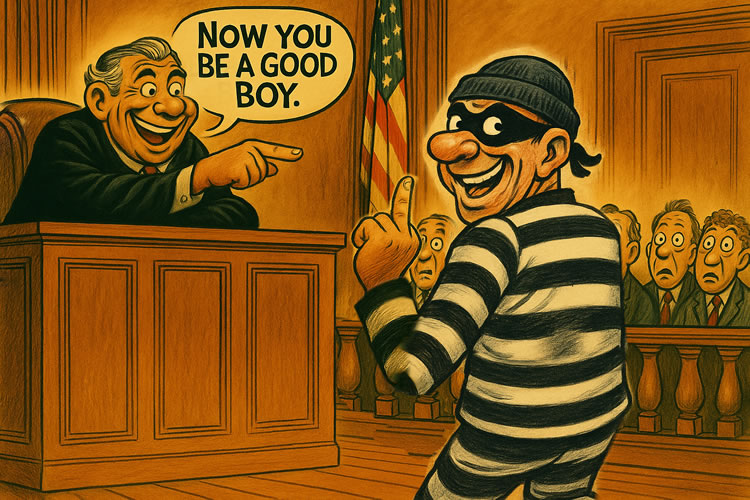For decades, the phrase “separation of church and state” has been tossed around in political debates, legal disputes, and public education controversies. Often, it’s treated as a hard constitutional line—one that supposedly mandates the removal of all religious expression from government spaces. But that’s a serious misunderstanding of both the history and legal meaning of the concept.
The First Amendment: What It Actually Says
The U.S. Constitution never uses the phrase “separation of church and state.” Instead, the First Amendment reads:
“Congress shall make no law respecting an establishment of religion, or prohibiting the free exercise thereof…”
This single sentence forms the basis for two critical protections:
- The Establishment Clause, which prohibits the government from establishing an official religion or favoring one religion over another.
- The Free Exercise Clause, which guarantees individuals the right to practice their faith freely.
Together, these clauses are meant to ensure religious liberty for all—not to create a government that is hostile to religion, but one that remains neutral.
Jefferson’s Wall
The famous phrase “a wall of separation between Church and State” originates not from the Constitution, but from an 1802 letter by Thomas Jefferson to the Danbury Baptist Association. In it, Jefferson used the metaphor to reassure a minority religious group that the federal government would not interfere with their religious practices.
Over time, that metaphor took on a life of its own—becoming a catch-all justification for a wide range of restrictions on religious expression, particularly in public schools. But Jefferson’s intent was to limit government interference in religion, not to banish religion from public life altogether.
Religion in Public Schools: What’s Allowed and What Isn’t
The U.S. Supreme Court has drawn the line between private religious expression and government endorsement. The result is a framework that permits religion in schools under specific conditions, while forbidding school-led religious activity.
Permitted:
- Student prayer: Students may pray individually or in groups, so long as it is voluntary and not disruptive.
- Teaching about religion: Religion may be taught in a historical, literary, or cultural context.
- Religious clubs: If a school allows other extracurricular clubs, it must also allow student-initiated religious clubs under the Equal Access Act.
- Moments of silence: Schools may have a moment of silence, provided it is not explicitly tied to prayer.
Prohibited:
- School-sponsored prayer: Faculty, administrators, or coaches may not lead students in prayer.
- Mandatory religious activities: Students cannot be compelled to participate in religious exercises.
- Curriculum that promotes religion: Public schools may not endorse or promote religious doctrine.
This legal structure stems from a series of landmark cases, including Engel v. Vitale (1962), where the Court struck down government-written prayers in public schools, and Abington School District v. Schempp (1963), which prohibited school-sponsored Bible readings.
🍁 Make a One-Time Contribution — Stand Up for Accountability in Vermont 🍁
The Line Between Neutrality and Hostility
It’s important to understand that the law doesn’t require public institutions to be hostile to religion—only neutral. Students don’t shed their First Amendment rights when they walk into a public school. What’s forbidden is coercion or official endorsement. Voluntary, student-led religious expression remains protected.
Problems arise when people assume the government must actively suppress all religious language or symbols to remain in compliance. That’s not what the Constitution demands.
Vermont-Specific Context
Vermont offers a unique lens into how these issues play out on the state level.
For one, Vermont law permits released-time religious instruction—a provision under which public school students may leave campus during school hours, with parental permission, to receive religious education elsewhere. These programs must occur off-site and cannot interfere with the academic schedule. While relatively rare today, the law remains on the books and reflects a longstanding effort to balance education with religious freedom.
Another major development involves school choice and funding. For years, Vermont’s Town Tuition Program provided state-funded tuition for students in districts without local schools—but excluded religious schools. That policy was upended following two U.S. Supreme Court rulings: Espinoza v. Montana (2020) and Carson v. Makin (2022). Both decisions held that if a state provides funding for private education, it cannot exclude religious options solely based on their religious identity.
As a result, Vermont was legally required to allow families to direct public tuition funds to qualifying religious schools. In response, the state settled litigation and directed school districts to treat religious and secular private schools equally under the program.
However, in 2025, Vermont enacted a new education reform law (Act 73) that changes the criteria for which independent schools may receive public tuition. The law now requires that eligible schools enroll a minimum percentage of publicly funded students—effectively disqualifying many private schools, including all Catholic schools, that do not meet the new threshold.
In other words, while Vermont can no longer ban religious schools outright, it has changed the rules in a way that disqualifies most private schools altogether, religious or otherwise. Critics see this as a legal workaround to reduce public support for religious education without directly violating federal rulings.
Misconceptions Fuel the Debate
Public confusion over this issue often stems from misinterpreting the Constitution as requiring a secular government space devoid of all religious expression. In reality, the First Amendment prevents the government from mandating religion or interfering with its practice. It does not—and was never meant to—eradicate religion from the public square.
What it aims to preserve is a government that does not pick sides: one that allows people to pray, worship, or not, without government endorsement or interference. That’s not anti-religion. It’s religious freedom.
Dave Soulia | FYIVT
You can find FYIVT on YouTube | X(Twitter) | Facebook | Parler (@fyivt) | Gab | Instagram
#fyivt #ImmigrationFacts #TaxpayerBurden #PolicyByTheNumbers
Support Us for as Little as $5 – Get In The Fight!!
Make a Big Impact with $25/month—Become a Premium Supporter!










Leave a Reply